Dive into the Spanish History through these 9 Dazzling Landmarks Around Different Cities
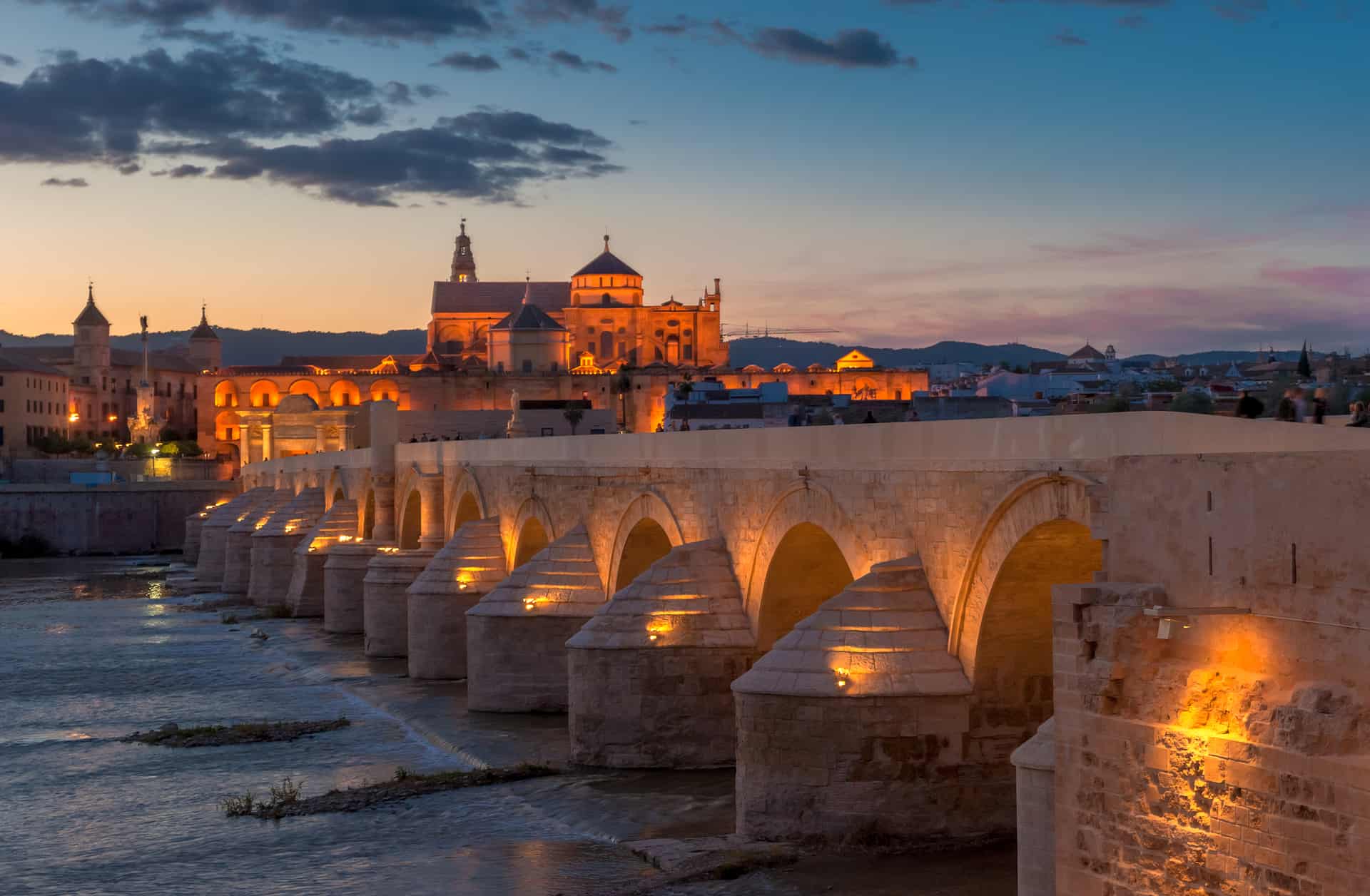
Updated On: February 01, 2024 by Miranne Khaled
Europe embraces more than a few beautiful countries with deep history and heritage. This time, we are focusing on Europe’s Iberian Peninsula, where the land of flamenco and fiesta lies, Spain. The history of Spain is one of the deepest and richest of all of Europe. It has a long timeline of several eras, where different cultures influenced the Spanish lands.
Throughout the years, Spain gained many nicknames from all the folks and tribes that passed by the lands. Various cultures have played a significant role in the making of the Spain we know today. These include the Castilians, Arabs, Roman gypsies, Jews, to name a few. Most of them ruled the country or even co-existed at some point in history.
Diving deep into the history of Spain can be quite profound, given its rich heritage. It takes a real history buff who is willing to go the distance. If you happen to be this fellow, we have got great news for you. The Spanish history happens to still hang in the air between several of the historical landmarks today. All you need to do is pack up and fly to Spain!
Top Attractions to Explore Spanish History
We’ve gathered for you the best destinations to visit in order to gulp down some of the profoundness of the Spanish history. Check out this magnificent list, where you can have a glimpse into a bygone era.
1- The Great Mosque of Cordoba (La Mezquita) – Cordoba
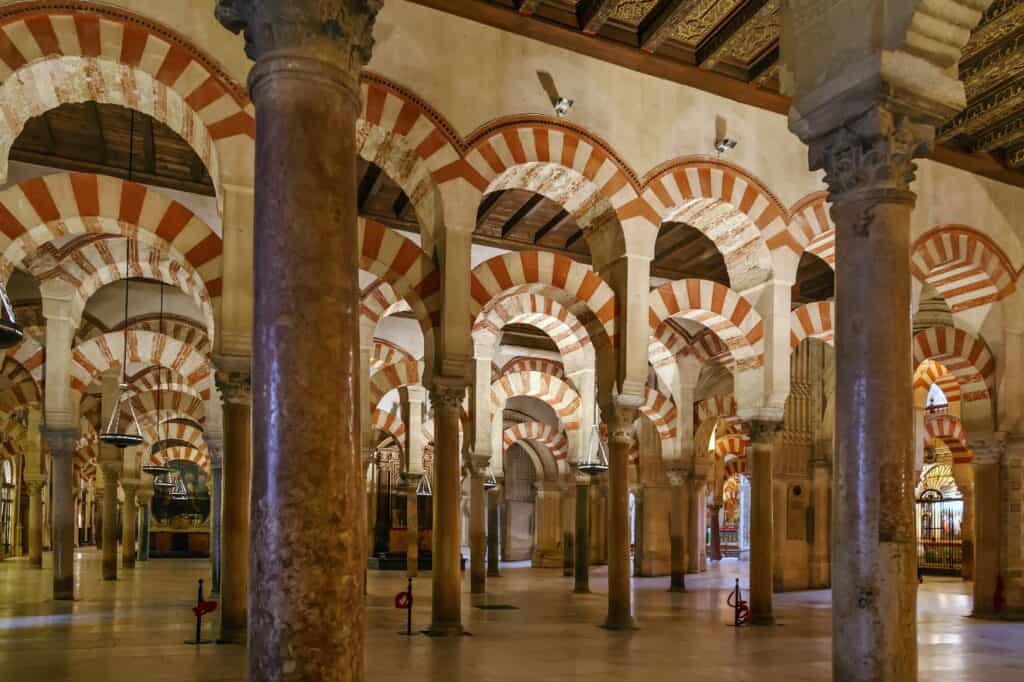
Cordoba is one of the magnificent cities in Spain that holds so much Spanish history within its borders. It happens to be home to the impressive religious structure that is the Great Mosque of Cordoba.
This mosque dates back to the 8th century. It was and has been a significance to the strength of the Iberian city during the Muslim rule. You can even see the Moorish style influencing the architecture of the structure.
Today, this structure rather serves as a Roman Catholic Cathedral. This transformation happened when the rule of Spain changed from Muslim to Christian in the 13th century. Thus, you can see the addition of some architectural features. Yet, the Islamic features of the structure remain intact. You can take your time exploring the insides of this enormous structure.
The highlights of the mosque are numerous. One of the impressive features is the hypostyle hall; a large prayer hall with many columns. The mihrab is also one of the popular features; it’s the focal point of prayer as it identifies the wall that faces Makkah. Right above it likes a superb dome that seem too lavish, given the gold that covers it.
2- Alhambra Palace – Granada
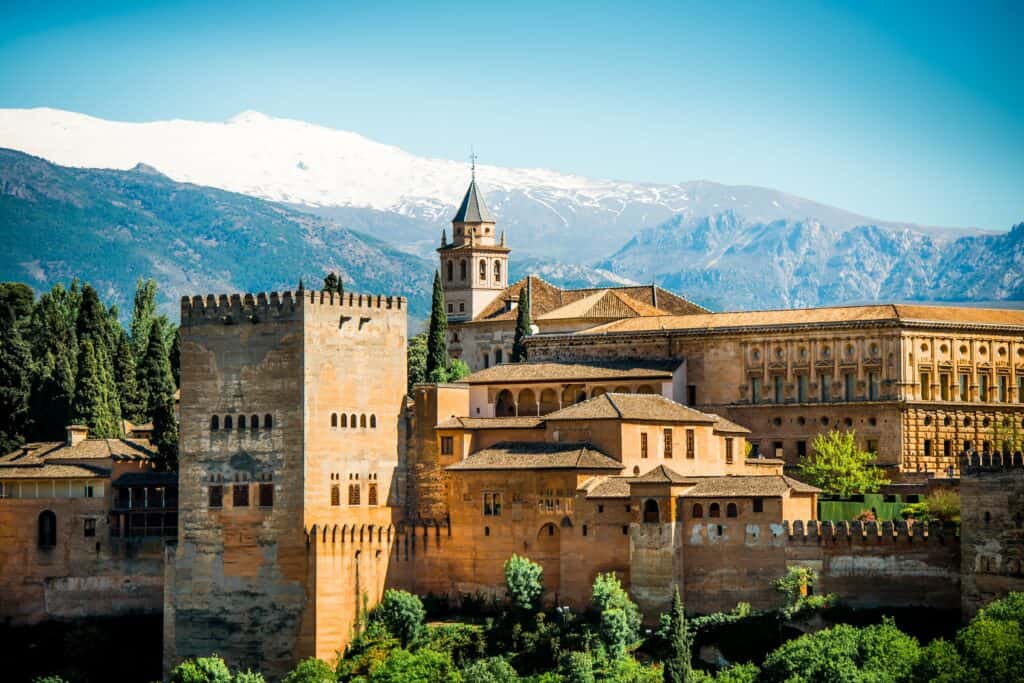
Granada is another city that clasps Spanish history related to the Moors. It used to be the capital city of Andalusia. Today, Granada attracts many tourists to observe its architectural work of art, Alhambra Palace. This palace’s name is the Arabic version of the red color, for its walls used to be a little reddish. Some people even refer to it as the red fortress.
This fortress dates back to 1238, during the empire of Muhammed II and was completed in 1358. It stands on a high plateau, overlooking the city of Granada. What we see today is not the original Moorish fortress of the 13th century. In fact, the outer walls are the only remaining parts of the fortress. The original fortress is today the Alcazaba Ruins found within; you can still explore the remnants of the castle.
The fortress complex encompasses numerous palaces, including the Palace of the Lions, the Palace of Ceremonial Rooms, the Royal Palace, and Palace of Charles V. Nonetheless, the Generalife Palace stands out among them all.
Each palace features some of the iconic landmarks, so you can literally spend your whole day unraveling its magic. Yet, the Generalife Palace happens to gain most of the hype. This lush paradise was the place where the Moorish Kings spent their summers. It possesses vast greenery landscapes among which paths trail.
3- La Sagrada Familia – Barcelona
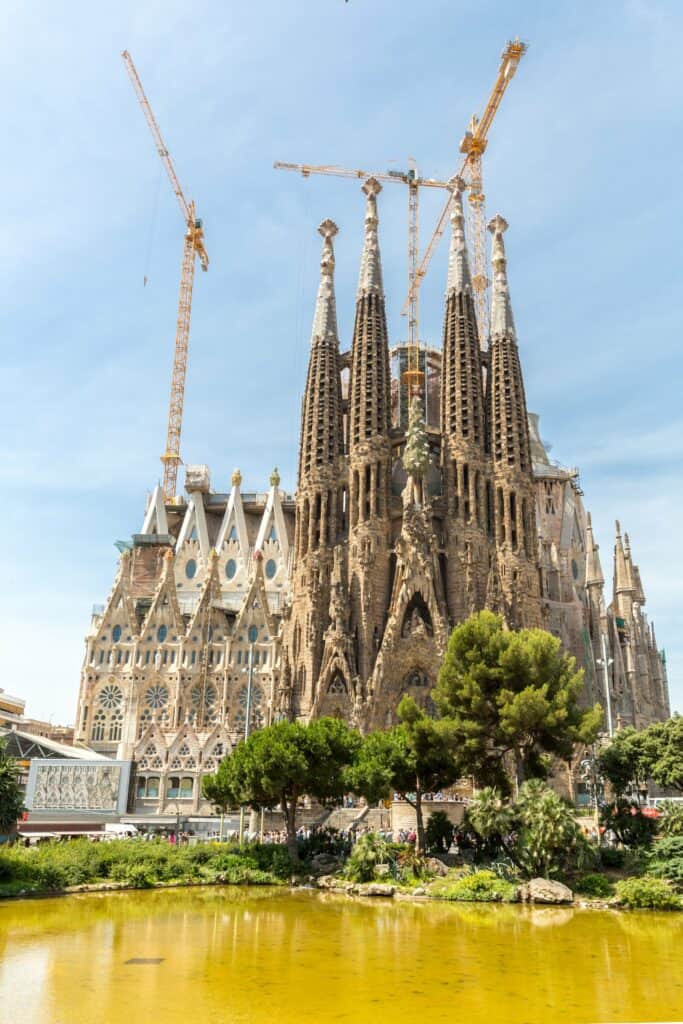
A trip to Spain can never be complete without a nice tour around its beautiful Barcelona. Well, needless to say, La Sagrada Familia is a staple and one of the main tourist attractions in the city. We have all seen many photos of people with this architectural masterpiece in the background and had the urge to travel. One of the great things about this cathedral is the Spanish history that lives within its walls.
While exploring this impressive structure, you will definitely come across the popular Nativity façade. This one happens to be the most popular, yet it is not the only one. There are other pretty façades to explore, including the Glory and the Passion façades. Nonetheless, they were all designed by the same architect, Antoni Gaudi, despite their dissimilarities.
After taking your time in wandering about the cathedral, you can treat yourself to something nice at the Plaza. This place lies just before the basilica, serving nice drinks and delicacies to savor. Numerous trees and flowers surround the area, creating a tranquil ambiance for you to relax. It’s also far from the noisy traffic, so you’ll definitely have a great time chilling around the basilica.
4- San Lorenzo de El Escorial – Madrid
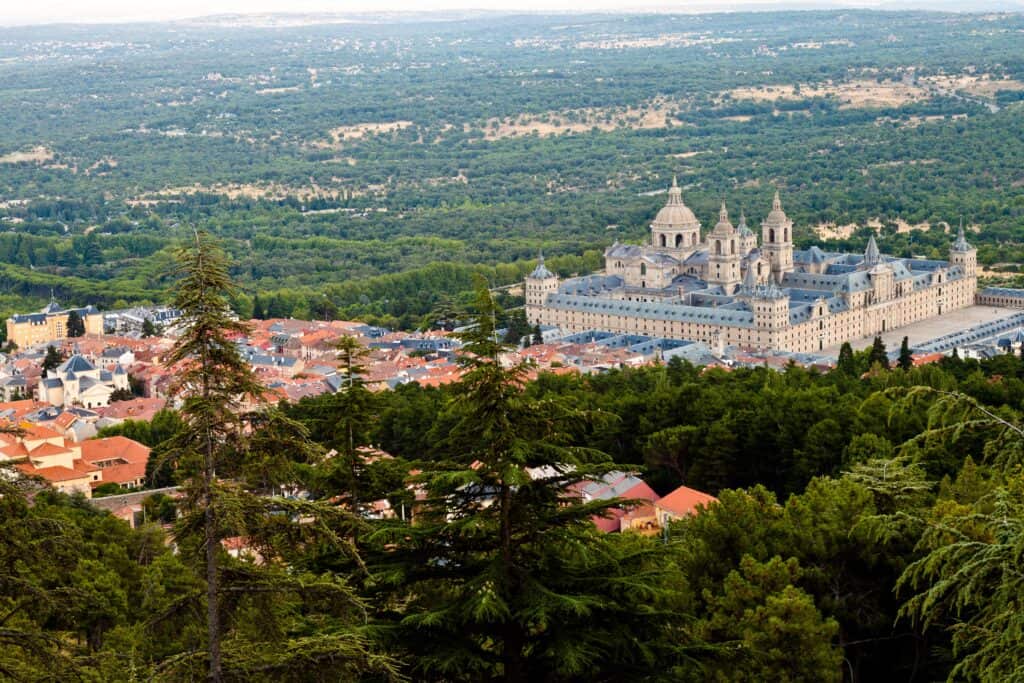
Madrid is a whole trip on its own given its richness in iconic landmarks and cultural sites. However, you can have a great day trip in the town of San Lorenzo de El Escorial if you happen to be a history buff. Moreover, the town is home to delicious cuisines and great outdoors for you to explore.
One of the great features of this town is the abundance of religious and historical complexes, mainly the monastery of El Escorial. This magnificent structure used to be home of the Spanish royalty for hundreds of years.
Besides, El Escorial complex encompasses a renowned Basilica with an architectural style resembling the Italian St. Peter’s Basilica. There’s also a great palace that holds layers of Spanish history within. You can immerse yourself in the great chunks of history that hang in the air of this enormous complex.
Moreover, you can enjoy the great outdoors by hiking in the dazzling surroundings of Sierra de Guadarrama. Biking is also one of the popular activities in the area. So, treat yourself to some fresh air while scrutinizing the panoramic views of nature.
5- Toledo Sephardic Museum (Museo Sefardi) – Toledo
Museums are some of the best buildings to head to when you are digging into the darkest secrets of history. In many cases, these structures are more than just buildings with fascinating art galleries; they hold real tales within. The Toledo Sephardic Museum is no exception. This historic site embraces pages of the Spanish history.
This museum should be your go-to if you have interest in learning about the Jewish history. It’s dedicated to the legacy, culture, and history of the Jewish population that resided in Spain for centuries. Besides, it’s a quite long history, if you know.
Interestingly, the complex itself in which the museum is housed was formerly a synagogue. Its walls had witnessed long years of the Jewish history and heritage since the 14th century. This site is one of the top historic sites in Spain that draw thousands of visitors every year.
6- Medina Azahara – Cordoba
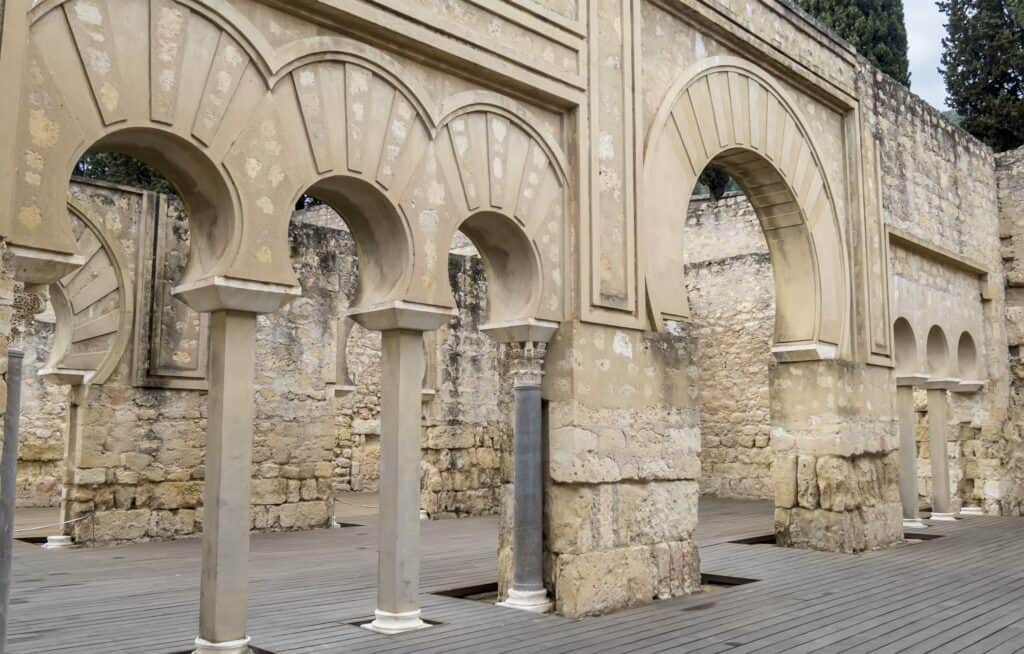
Cordoba city seems to be still holding the remnants of Muslim Spain, or what used to be called Al Andalus. Medina Azahara is a popular town to explore if you have interest in the Islamic era of the Spanish history. Many guided tours are made through the medieval town, where you can take a look at the 10th-century version of Spain.
This town sits a few miles on the outskirts of Cordoba. Its name literally translates to “The Shining City,” given the advanced civilization of that time. Today, it still holds a historical significance to the Spanish history.
The first thing that will capture your attention is the town’s location. It restfully sits on an elevated hill, overlooking the countryside. The strategic location of Mediana Azahara makes it a perfect spot to enjoy scenic views. Unfortunately, this destination goes missed by many visitors despite its historical significance. Make sure you add it to your itinerary to see this side of the Spanish history.
7- Casa Batlló – Barcelona
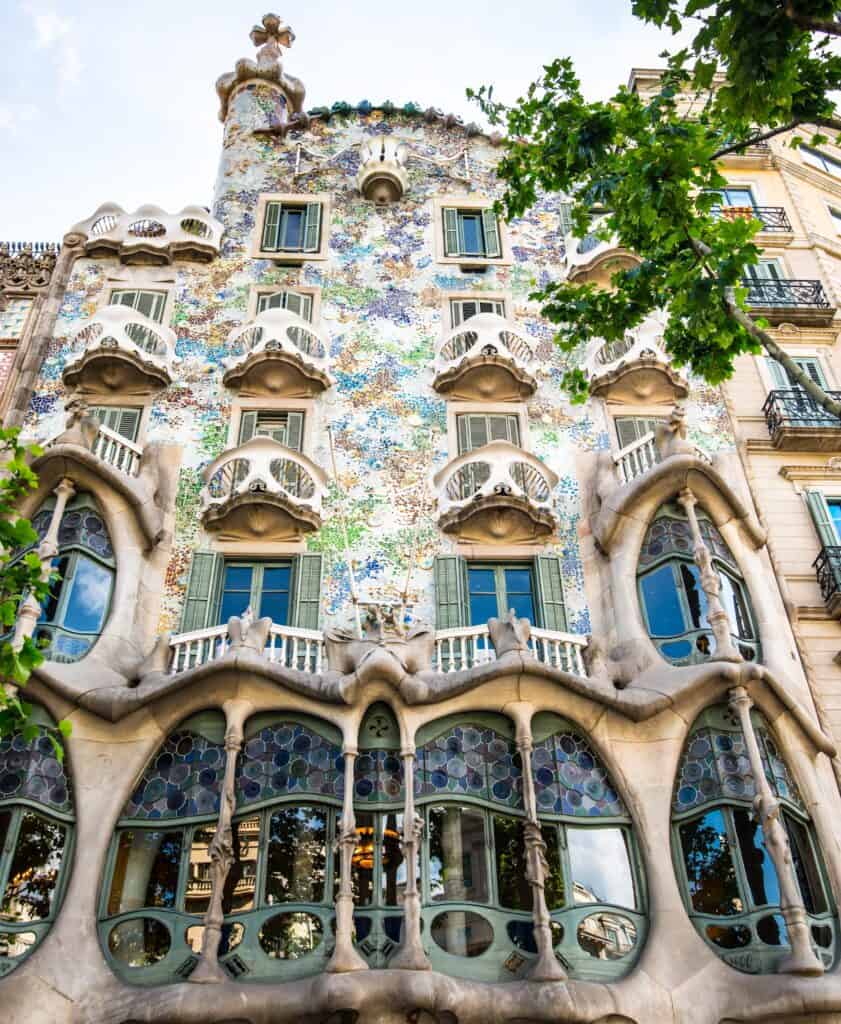
If you are to seeing something really iconic, make sure you don’t miss Barcelona’s famous Casa Batlló. This tremendous building stands proudly in the center of Barcelona on Paseo de Garcia street.
Moreover, Casa Batlló is another masterpiece of the artworks of the renowned architect, Antoni Gaudi. In fact, it was formerly built in 1877 by Emilio Sala Cortes, who happens to be one of Gaudi’s professors. But the façade that we see today is the renovation that took place in 1904 by the supervision of Gaudi.
The building has been open to the public in 1995. It now serves as an architectural masterpiece where different events and activities take place. Furthermore, it a UNESCO World Heritage Site. Make sure Casa Batlló is one your itinerary if you are interested in embarking a journey into Gaudi’s works of art.
This building has been owned by several influential families throughout the years. You can feel the existence of many stories in its walls. There’s so much to explore within the walls of Casa Batlló, including the 360 experience of Gaudi’s Cube and descending to the House’s Basement. You may not come across layers of Spanish history in here, but you’ll have nonetheless.
8- The Historical City of Segovia – Segovia
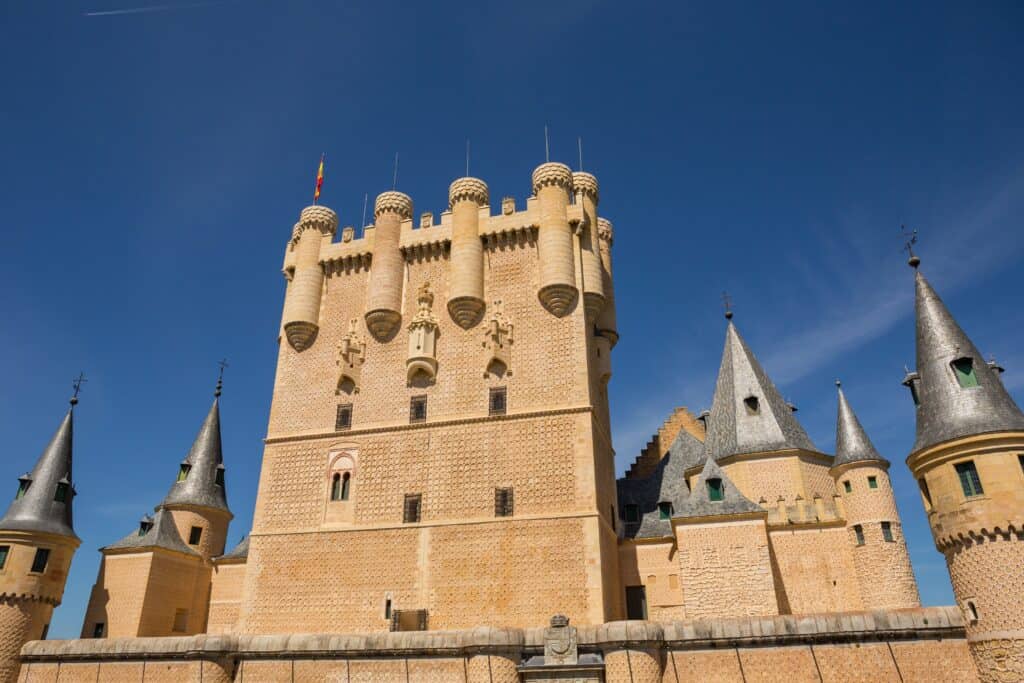
Spain is home to several centuries-old sites that are unmissable when you’re looking into the Spanish history. Segovia is one of Spain’s beautiful cities, but it’s not deemed among the large buzzing cities. For that reason, many tourists tend to miss this great spot in Spain. However, as a history buff, you should add Segovia to the top of your itinerary.
One of the splendid features of Segovia is its centuries-old fortress. Rather known as Alcazar de Segovia, which means the Fortress of Segovia. It’s a historical landmark that dates back to the 12th century, according to the Christian writing found inside. Make sure you book your spot in the tour in advance if you’re willing to visit.
Another iconic highlight in Segovia is the Roman columns known as the Aqueduct. These columns go back to a couple of thousands years ago when the Romans built them to carry water to the city from Acebeda River. It’s deemed an iconic construction all over Europe and one of its kind. You can wander around or under them and appreciate their archaic nature.
9- El Miguelete Tower (El Micalet) – Valencia
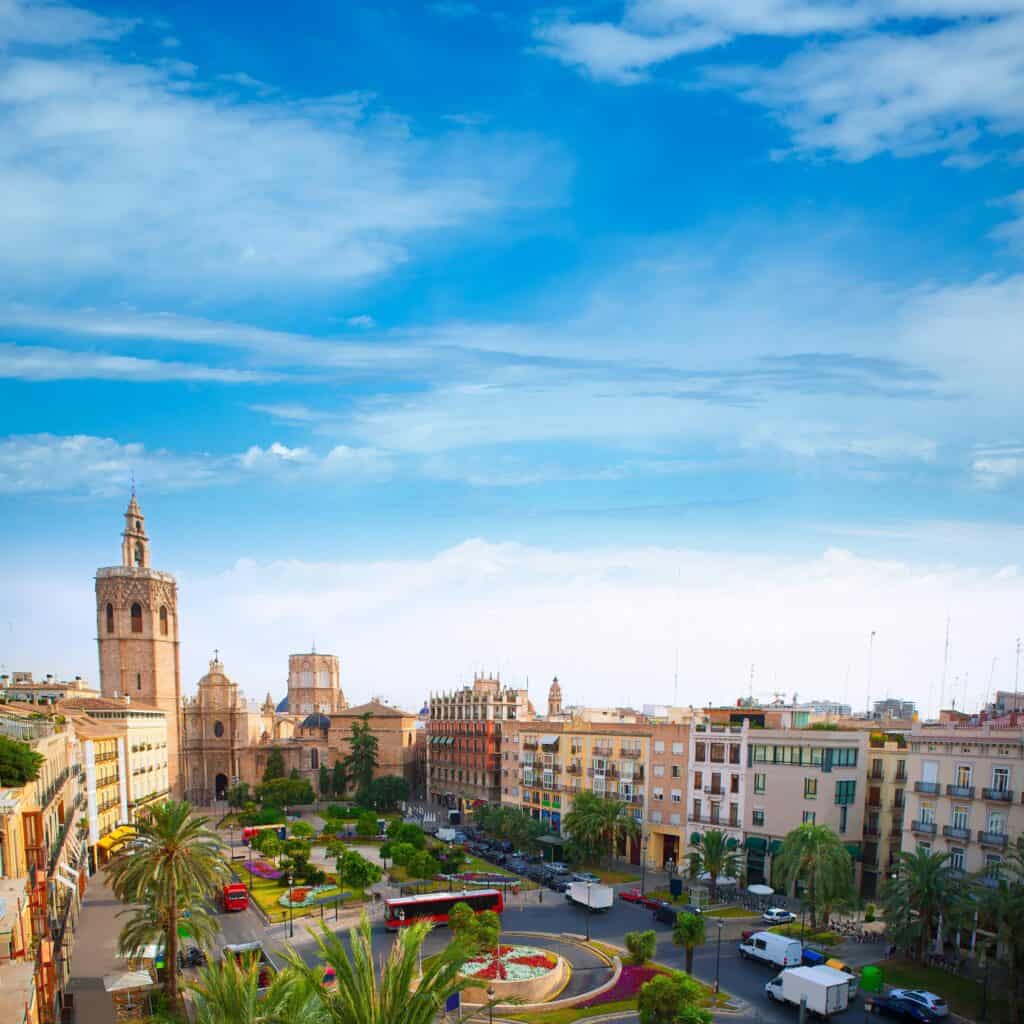
El Miguelete Tower dates back to 1381, when its construction began to take place. It’s a bell tower attached to the Valencia Cathedral. The tower has a fascinating Gothic style and is one of the most symbolic monuments of Valencia. You can find the tower beside the cathedral’s main door.
Visitors are permitted to climb to the top of the tower and enjoy the scenic views it offers. It takes you 207 steps to reach to top of the tower. Lots of work, but we promise the scenes it offers are worth the great effort. You can observe superlative landscapes of Valencia city.
Most visitors are compelled to scrutinize the inside of the renowned cathedral after finishing their tour around the tower. The cathedral is immersed in profound history and art. It also happens to be home to the famous Holy Chalice, or the Holy Grail. Many Christians from around the world travel to Valencia to check out the vessel that Jesus used at the Last Supper.
Hopefully you enjoyed this article on Spanish History, we definitely enjoyed researching and writing about it – educating ourselves as we went! Just in case you are interested in finding out more about Spain – travel and tourism, we have some excellent city guides for you to check out. Our latest ones are on the historic city of Malaga, the incredible seaside region of Murcia (one of my favourites), the port city of Cartagena and of course the beautiful city of León.






